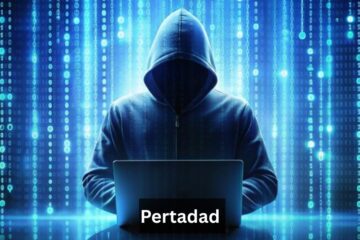The digital world thrives on numbers, and one of the most critical numerical systems in our online lives is the IP address. Among these, a peculiar combination like 185.63 2253.200 instantly sparks curiosity. What does it mean? Is it a real IP address? And if not, why does it exist? This article explores the mystery of 185.63 2253.200, shedding light on how IP addresses work, why validation is important, and how network security depends on accurate addressing.
At first glance, 185.63 2253.200 may seem like a normal IP, but in networking it’s a unique code that identifies devices across the internet. However, in this case, 185.63 2253.200 is not valid — it’s a malformed IP address that breaks a fundamental rule of the IPv4 protocol.
Every IPv4 address must be written in dotted decimal notation, using four octets separated by dots, each ranging from 0 to 255. The number 2253 in 185.63 2253.200 exceeds that range, making this IP invalid. Yet, the very presence of such malformed numbers in network logs often tells an interesting story about errors, misconfigurations, or even attempted spoofing.
Even though 185.63 2253.200 isn’t a valid IP address, it’s not meaningless. It symbolizes how a tiny deviation in data entry can lead to miscommunication in digital systems. In cybersecurity, such anomalies are treated with caution because malformed or spoofed IPs can appear in network logs, potentially signaling unauthorized activity.
By understanding the structure and purpose of 185.63 2253.200, network administrators and developers gain valuable insight into data validation, firewall management, and the importance of robust IP verification.
Understanding IP Address Formats
What Is an IP Address and How Does It Work?
An IP address (Internet Protocol address) acts as a digital mailing address, ensuring that every connected device can send and receive data. The TCP/IP suite — the foundation of internet communication — relies on these numerical identifiers to route packets across vast networks.
IP addresses are managed globally by organizations such as IANA (Internet Assigned Numbers Authority) and distributed regionally by ARIN, RIPE NCC, and APNIC. These entities maintain fair allocation and prevent duplication across the internet.
The Difference Between IPv4 and IPv6
While 185.63 2253.200 tries to resemble an IPv4 address, it fails structurally. IPv4 uses four octets (e.g., 192.168.0.1), but IPv6 (Internet Protocol version 6) uses eight groups of hexadecimal numbers, designed to overcome the address shortage problem. IPv6 offers an almost limitless supply of unique addresses, improving routing and security through DNSSEC and built-in authentication features.
How IP Addresses Are Structured (Octets, Ranges, and Dotted Decimal Notation)
An IPv4 address follows the dotted decimal notation — four groups of numbers separated by dots. Each segment, or octet, represents 8 bits, ranging between 0 and 255. This strict numerical range ensures standardization. In contrast, the octet “2253” in 185.63 2253.200 violates this rule, causing a network error.
Understanding these structures helps detect invalid IPs, improve log sanitization, and maintain healthy routing tables across devices.
Why 185.63 2253.200 Is Not a Valid IP Address
Breaking Down the Numerical Error in 185.63 2253.200
The issue with 185.63 2253.200 is mathematical. In IPv4, no octet can exceed 255, as each represents one byte of data. The segment “2253” crosses this boundary, making it an invalid entry according to RFC 791, the standard set by the IETF (Internet Engineering Task Force).
Valid Range of IP Address Octets (0–255 Rule)
Each of the four parts of an IPv4 address corresponds to 8 bits, allowing values from 0 to 255. For instance, 192.168.1.1 is valid, but 192.168.999.1 is not. This strict rule ensures predictable packet forwarding and reliable routing table management.
Common Mistakes That Lead to Malformed IPs
Malformed IP addresses like 185.63 2253.200 often occur due to typographical errors, software bugs, or corrupted data entries. Sometimes, they appear in syslog or network logs during parsing errors or even as fake entries inserted by malicious bots attempting IP spoofing.
The Technical Science Behind IP Validation
IPv4 Validation Rules and Standards (RFC 791 Explained)
The RFC 791 defines how IPv4 addresses are structured and transmitted. It dictates the range, the format, and the header structure for each packet. Any deviation — such as the use of 185.63 2253.200 — violates the standard, causing a rejection by routers or firewalls.
Tools and Methods for Checking IP Validity
Validating IPs ensures that data packets reach legitimate destinations. Tools like WHOIS, AbuseIPDB, VirusTotal, and Shodan allow users to check IP authenticity, detect anomalies, and track network reputation. Automated IP validation libraries in programming languages like Python or JavaScript can filter malformed IPs before they cause system errors.
How Firewalls and Network Systems Handle Invalid IPs
Firewalls and Intrusion Detection Systems (IDS) are built to recognize invalid addresses. When they encounter entries like 185.63 2253.200, they either drop the packets or flag them for investigation. This process protects networks from potential spoofed IP address detection failures and reinforces firewall rules that block non-standard data flows.
Real-World Scenarios Involving Invalid IP Addresses
Malformed IPs Found in Network Logs
Network administrators frequently discover malformed entries like 185.63 2253.200 in log files. These entries may stem from misconfigured systems or attempts to disguise true origins during IP spoofing. Regular log analysis helps identify these anomalies and protect against intrusion attempts.
What Happens When You Enter 185.63 2253.200 in a Browser
Typing 185.63 2253.200 into a browser yields an error because browsers validate IPs before sending a request. Since the third octet exceeds the valid numerical range, the system immediately rejects the address, ensuring safe browsing behavior.
How Hackers and Bots Use Fake or Invalid IPs
Cyber attackers sometimes use malformed IPs like 185.63 2253.200 to evade detection systems. Such tricks may confuse log parsers or mislead analysts into ignoring suspicious traffic. Effective SIEM (Security Information and Event Management) tools can counter this by automatically identifying and quarantining invalid IPs.
Security Implications of Invalid or Spoofed IPs
How Invalid IPs Affect Network Security
Invalid IP addresses can disrupt packet filtering and routing tables, leading to vulnerabilities. Networks relying on weak validation may misroute or mishandle such packets, creating opportunities for exploitation.
IP Spoofing and Cyber Attack Vectors
Attackers frequently manipulate IP headers to disguise their true identities — a process called IP spoofing. While 185.63 2253.200 itself may not be usable, it represents how malformed entries can be used to flood systems or bypass filters.
Organizations strengthen their defenses through IDS/IPS (Intrusion Prevention Systems) and secure firewall configurations that block unverified traffic.
The Importance of Log Analysis and Intrusion Detection
Continuous log analysis and anomaly detection can quickly reveal malformed IPs. By training machine learning systems to recognize entries like 185.63 2253.200, organizations improve visibility and preempt potential attacks.
Understanding the Broader IP Ecosystem
The Role of IANA, ARIN, RIPE NCC, and APNIC
Global internet governance depends on IANA and regional authorities such as ARIN, RIPE NCC, and APNIC. These organizations ensure every valid IP address — not anomalies like 185.63 2253.200 — follows proper allocation rules.
WHOIS and IP Lookup Services Explained
Tools like WHOIS provide transparent records of registered IP addresses, showing ownership, location, and hosting details. Searching 185.63 2253.200 through WHOIS returns no result — proof of its invalidity and the importance of such verification systems.
CIDR, Subnets, and Network Classes Overview
CIDR (Classless Inter-Domain Routing) and subnet masks define how IPs are grouped and routed. Understanding subnet mask notation (e.g., /24 or /16) helps system administrators prevent accidental overlap and maintain clean network segmentation.
Transitioning from IPv4 to IPv6: The Future of IP Addressing
As the internet grows, IPv4 addresses are running out. IPv6 provides a future-proof solution, offering vastly more address space and improved network security features — ensuring malformed addresses like 185.63 2253.200 become even less likely to appear.
Tools and Resources to Investigate 185.63 2253.200
Top IP Validation and Lookup Tools
Sites like AbuseIPDB, Shodan, and VirusTotal offer valuable insights for IP verification. They help identify suspicious addresses, though 185.63 2253.200 won’t return data due to its invalid structure.
How to Use DNS and WHOIS for Investigating IP Data
DNS and WHOIS queries allow users to validate addresses and trace their origins. A non-existent result for 185.63 2253.200 signals that the address is malformed or possibly spoofed.
Open-Source Scripts for Identifying Malformed IPs
Developers can use open-source tools or write their own IP validation libraries to detect errors automatically. Languages like Python or Go support regex-based validation that instantly flags addresses like 185.63 2253.200.
SEO and Content Angle: Why People Search for 185.63 2253.200
Many people stumble upon numbers like 185.63 2253.200 while analyzing server logs or security reports. They turn to search engines seeking its meaning or source. Such curiosity-driven searches offer an opportunity for educational content that explains IPv4 address validation rules, log analysis, and network security concepts clearly.
Best Practices for Network Administrators and Developers
How to Handle Malformed or Invalid IP Input
Implementing data sanitization in code prevents malformed entries from entering systems. Tools and regex patterns ensure every IP adheres to IPv4 address structure rules.
Setting Up Alerts for Suspicious IP Behavior
Network monitoring systems should flag entries like 185.63 2253.200 instantly. Automated alerts improve response time and protect digital assets from spoofing or malformed packets.
Strengthening Security Through Proper IP Management
Effective firewall handling, NAT (Network Address Translation) rules, and IDS integration make it harder for bad actors to exploit invalid IPs. A secure, validated environment builds trust across networks and users alike.
Conclusion
The mystery of 185.63 2253.200 teaches a crucial lesson: precision matters in the digital world. A single misplaced digit can break communication or expose vulnerabilities. Through understanding IPv4 validation rules, firewall configurations, and network security principles, we ensure that our digital systems remain accurate, efficient, and secure.
As the internet continues to evolve toward IPv6, one thing remains clear — every number counts. Even an invalid one like 185.63 2253.200 can inspire curiosity, learning, and ultimately, better cybersecurity awareness.
Frequently Asked Questions
Is 185.63 2253.200 a Real IP Address?
No. The third octet “2253” exceeds the IPv4 range (0–255), making 185.63 2253.200 invalid.
What Causes Invalid IP Addresses to Appear in Logs?
Malformed IPs often result from typos, parsing errors, or spoofed data inserted by bots.
Can Hackers Use Malformed IPs to Bypass Firewalls?
Yes, sometimes attackers send malformed packets to confuse poorly configured firewalls or IDS systems.
How Do I Verify the Validity of an IP Address?
Use tools like WHOIS, AbuseIPDB, or code-based validation methods that follow RFC 791 standards.
What Are the Differences Between IPv4 and IPv6?
IPv4 uses four 8-bit octets, while IPv6 uses eight 16-bit hexadecimal groups, vastly expanding the address pool.



